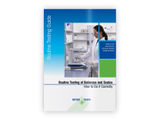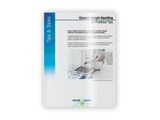To use all functions of this page, please activate cookies in your browser.
my.chemeurope.com
With an accout for my.chemeurope.com you can always see everything at a glance – and you can configure your own website and individual newsletter.
- My watch list
- My saved searches
- My saved topics
- My newsletter
Angiotensin receptor
The angiotensin receptors are a class of G protein-coupled receptors with angiotensins as ligands.[1] They are important in the renin-angiotensin system: they are responsible for the signal transduction of the main effector hormone.[2] Additional recommended knowledge
StructureThe AT1 and AT2 receptors share a sequence identity of ~30%, but have a similar affinity for angiotensin II, which is their main ligand. MembersOverview table
AT1The AT1 receptor is the best elucidated angiotensin receptor. MechanismIt is activated by angiotensin II. It is coupled to Gq/11 and Gi/o and thus activates phospholipase C and increases the cytosolic Ca2+ level, which itself performs cellular mechanisms, as well as activating protein kinase C It also inhibits adenylate cyclase and activate various tyrosine kinases.[2] EffectsEffects mediated by the AT1 receptor include vasoconstriction, aldosterone synthesis and secretion, increased vasopressin secretion, cardiac hypertrophy, augmentation of peripheral noradrenergic activity, vascular smooth muscle cells proliferation, decreased renal blood flow, renal renin inhibition, renal tubular sodium reuptake, modulation of central sympathetic nervous system activity, cardiac contractility, central osmocontrol and extracellular matrix formation.[4] AT2AT2 receptors are more plentiful in the fetus and neonate. Effects mediated by the AT2 receptor include inhibition of cell growth, fetal tissue development, modulation of extracellular matrix, neuronal regeneration, apoptosis, cellular differentiation and maybe vasodilation. AT3 and AT4Other poorly characterized subtypes include the AT3 and AT4 receptors. The AT4 receptor is activated by the angiotensin II metabolite angiotensin IV, and may play a role in regulation of the CNS extracellular matrix. See alsoReferences
Categories: Cell signaling | Signal transduction | G protein coupled receptors |
|||||||||||||||||||||||||||||||||||||||||||||||||||||||||||||||||||||||||||
| This article is licensed under the GNU Free Documentation License. It uses material from the Wikipedia article "Angiotensin_receptor". A list of authors is available in Wikipedia. | |||||||||||||||||||||||||||||||||||||||||||||||||||||||||||||||||||||||||||
- Asbestos,_Quebec
- High-performance combination: Batteries made of silicon and sulphur - Research team of material scientists present an innovative, sustainable energy storage concept
- We Wouldn’t Be Able to Control Superintelligent Machines - Would the AI cure cancer, bring about world peace, and prevent a climate disaster? Or would it destroy humanity and take over the Earth?
- LyondellBasell to Close LDPE Unit at Carrington, U.K.
- Rudolph Logic Systems GmbH - Sarstedt, Germany






